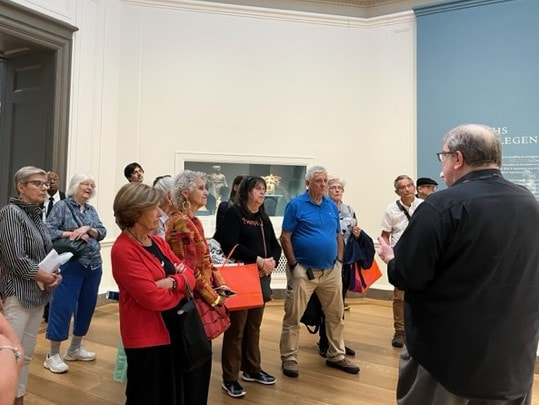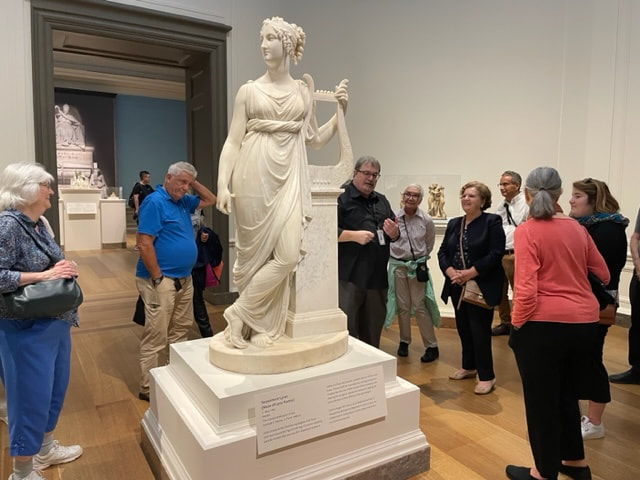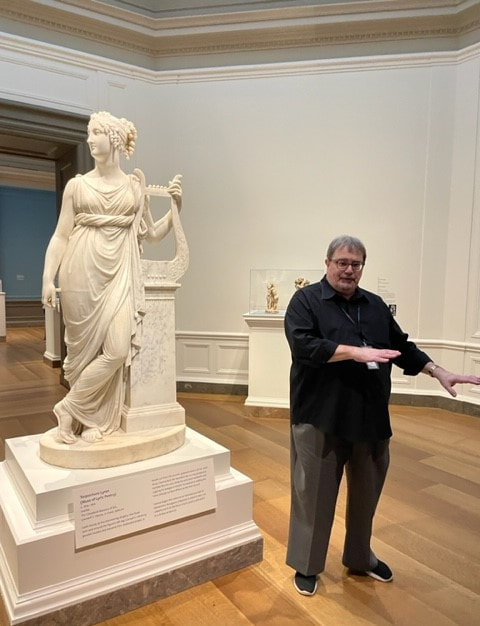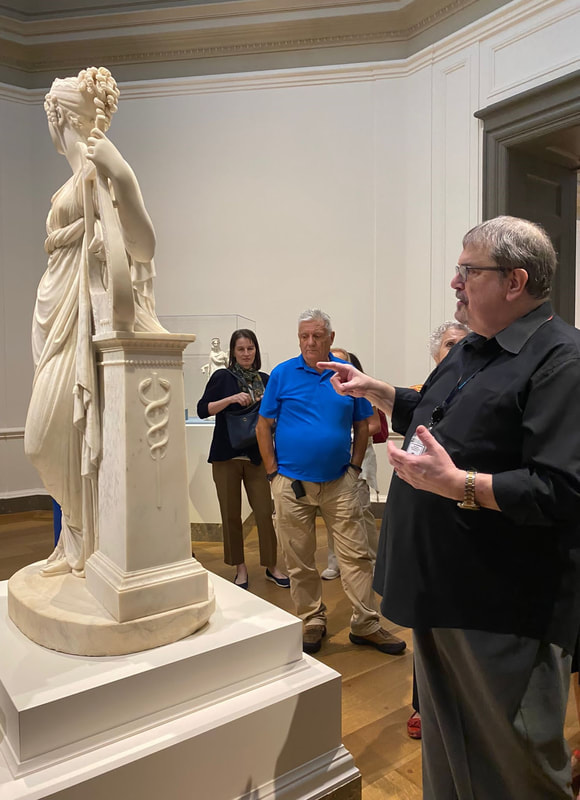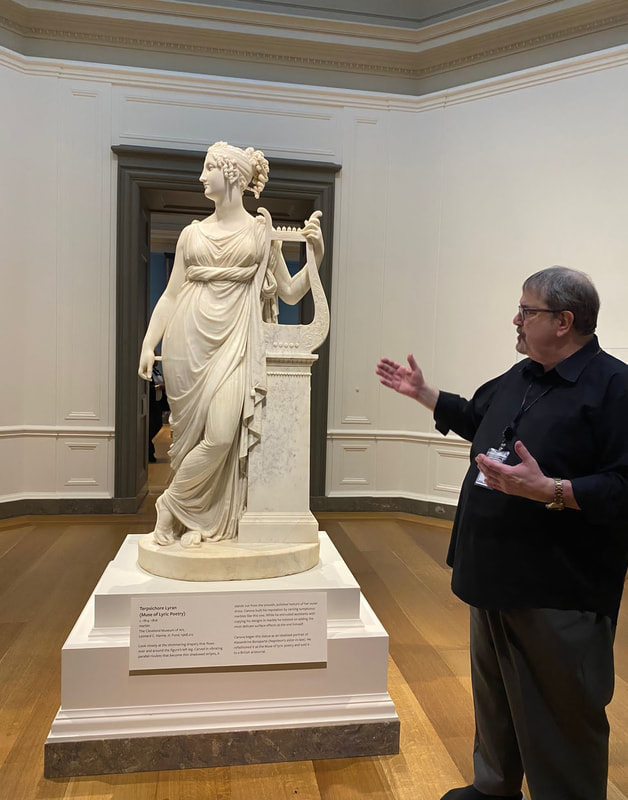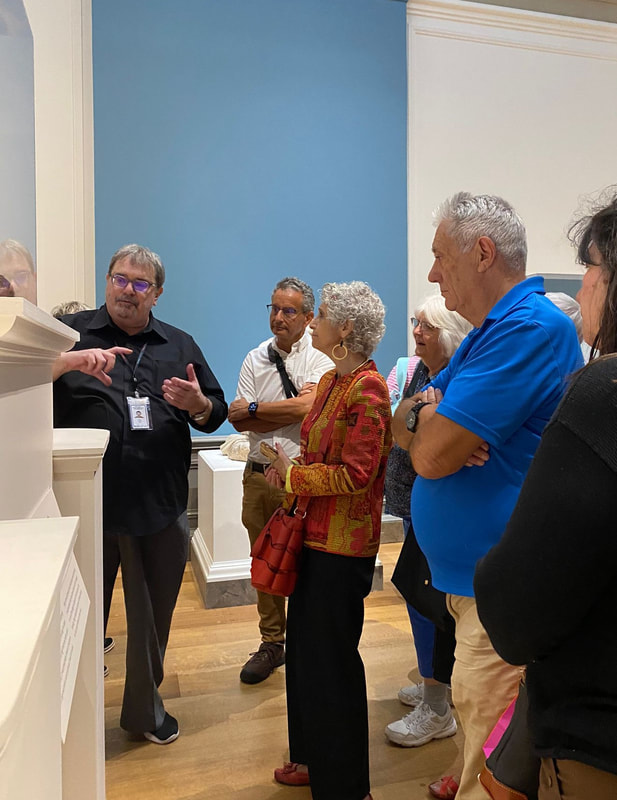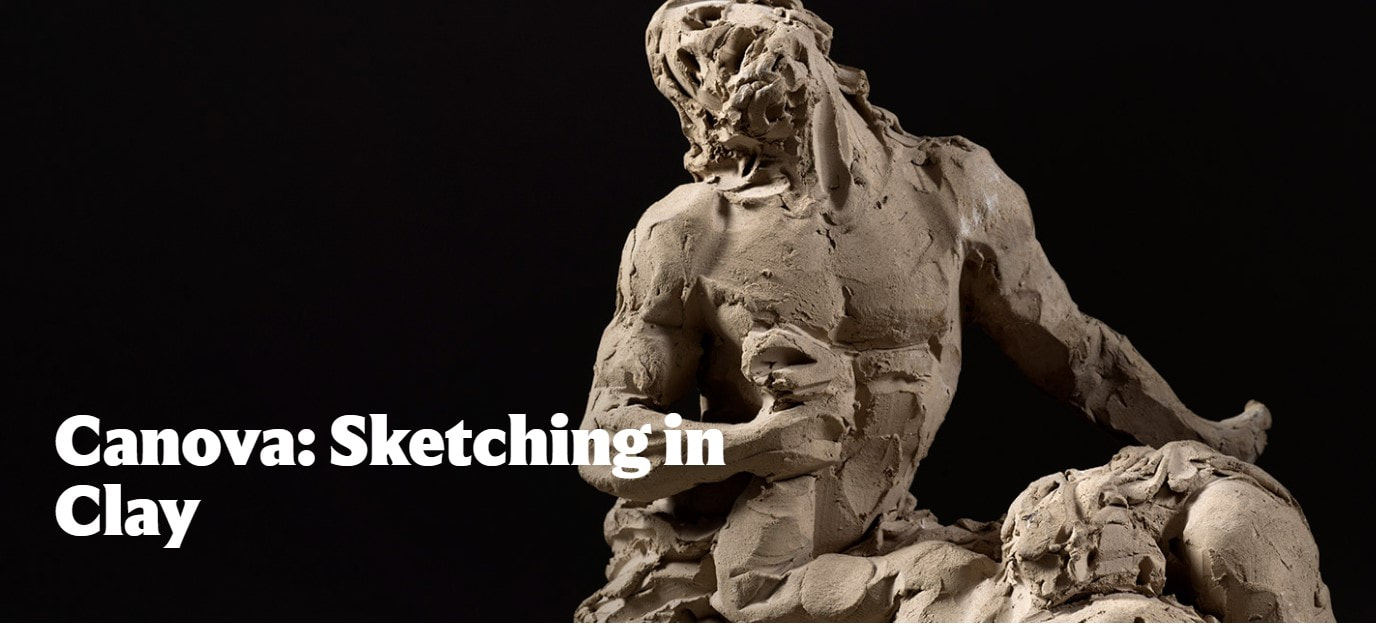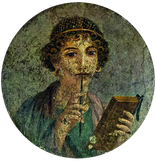Our visit to "Canova: Sketching in Clay" exhibition at the National Gallery of Art in Washington DC,
on October 5, 2023.
Splendid guided tour by Davis Gariff, curator of the exhibition.
Lecture 1 by David Gariff : Antonio Canova and His Contemporaries
Recording
Lecture 2 by David Gariff: Italian Sculpture from Antonio Canova to Medardo Rosso
Recording
Recording
Lecture 2 by David Gariff: Italian Sculpture from Antonio Canova to Medardo Rosso
Recording
Thu. October 5 at 1:00 pm
It is a must-see show — Inside the mind of Canova.
How does a sculptor turn an initial idea into a finished work of marble? For Antonio Canova (1757–1822), the most famous artist of Europe’s revolutionary period, the answer was with clay.
It is a must-see show — Inside the mind of Canova.
How does a sculptor turn an initial idea into a finished work of marble? For Antonio Canova (1757–1822), the most famous artist of Europe’s revolutionary period, the answer was with clay.
Program
8:30 AM: Departure from the AIS office (230 South Broad Philadelphia) with a private coach bus
11:30 AM: Arrival at National Gallery of Art West Building
12:00 PM: Lunch (self-pay) in the Cascade Café (West Bldg)
1:00 PM: One hour tour of the Canova exhibition with David Gariff, curator and guide
2:00 PM: Free time to revisit the exhibition or another part of the National Gallery of Art
3:30 PM: Bus returns to Philadelphia. Arrive by 6:30-7:00 PM
For help, write to [email protected]
8:30 AM: Departure from the AIS office (230 South Broad Philadelphia) with a private coach bus
11:30 AM: Arrival at National Gallery of Art West Building
12:00 PM: Lunch (self-pay) in the Cascade Café (West Bldg)
1:00 PM: One hour tour of the Canova exhibition with David Gariff, curator and guide
2:00 PM: Free time to revisit the exhibition or another part of the National Gallery of Art
3:30 PM: Bus returns to Philadelphia. Arrive by 6:30-7:00 PM
For help, write to [email protected]
June 11 – October 9, 2023
National Gallery of Art, Washington DC, West Building, Main Floor, Galleries 74, 75, 76, 79
How does a sculptor turn an initial idea into a finished work of marble? For Antonio Canova (1757–1822), the most famous artist of Europe’s revolutionary period, the answer was with clay.
Working with his hands and small tools, Canova produced dazzling sketch models in clay, which helped him plan his designs for his large statues in marble. Imprinted with the fire of his imagination, these sketches were boldly executed in mere minutes. Canova also made more finished models, sensuous in their details, that he showed to patrons or used as guides for carving.
More than 30 of his some 60 or so surviving models reveal the artist’s extraordinary working process—a process that led to the creation of some of the most iconic works in the history of sculpture.
Organization
The exhibition is organized by the National Gallery of Art, Washington, and the Art Institute of Chicago.
The exhibition is curated by C. D. Dickerson III, senior curator of European and American art, National Gallery of Art, and Emerson Bowyer, Searle Curator, Painting and Sculpture of Europe, the Art Institute of Chicago.
Sponsors
Major support is provided by the Annenberg Fund for the International Exchange of Art.
Additional support is provided by the Embassy of Italy.
Under the patronage of the National Committee for the Celebration of the Bicentenary of the Death of Antonio Canova, Ministry of Culture, Rome.
National Gallery of Art, Washington DC, West Building, Main Floor, Galleries 74, 75, 76, 79
How does a sculptor turn an initial idea into a finished work of marble? For Antonio Canova (1757–1822), the most famous artist of Europe’s revolutionary period, the answer was with clay.
Working with his hands and small tools, Canova produced dazzling sketch models in clay, which helped him plan his designs for his large statues in marble. Imprinted with the fire of his imagination, these sketches were boldly executed in mere minutes. Canova also made more finished models, sensuous in their details, that he showed to patrons or used as guides for carving.
More than 30 of his some 60 or so surviving models reveal the artist’s extraordinary working process—a process that led to the creation of some of the most iconic works in the history of sculpture.
Organization
The exhibition is organized by the National Gallery of Art, Washington, and the Art Institute of Chicago.
The exhibition is curated by C. D. Dickerson III, senior curator of European and American art, National Gallery of Art, and Emerson Bowyer, Searle Curator, Painting and Sculpture of Europe, the Art Institute of Chicago.
Sponsors
Major support is provided by the Annenberg Fund for the International Exchange of Art.
Additional support is provided by the Embassy of Italy.
Under the patronage of the National Committee for the Celebration of the Bicentenary of the Death of Antonio Canova, Ministry of Culture, Rome.

